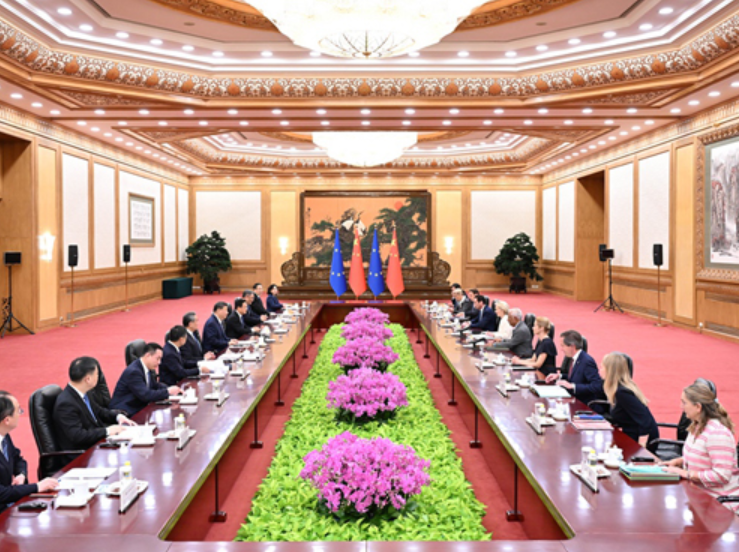China-EU Climate Cooperation: Strategic Opportunities and Future Outlook
Climate as the Anchor of Stability in China-EU Relations
1. Historic Moment for Climate Commitment
On July 24, 2025, Chinese President Xi Jinping met with EU leaders visiting Beijing for the 25th China–EU Summit. He emphasized the need to address global challenges including climate change based on mutual respect, open cooperation, and win-win outcomes. During the summit, climate cooperation stood out as a rare area of consensus. Both sides pledged to update their Nationally Determined Contributions (NDCs) by COP30 and to deepen low-carbon technology cooperation.
2. Strategic Opportunities in Carbon Neutrality Cooperation
1. Climate as a Bridge: Despite differences in trade and geopolitics, climate cooperation between China and the EU has remained steady. The joint statement highlights green as the defining color of cooperation, positioning climate as a trust-building domain.
2. CBAM and Industrial Transition: The EU's Carbon Border Adjustment Mechanism (CBAM), effective from 2026, exerts pressure on Chinese exporters. Although their policy paths differ, both sides face the shared task of green supply chain transformation.
3. Carbon Market Connectivity: China is building its national carbon market and exploring connections with the EU Emissions Trading System (ETS). Interoperability would lower mitigation costs and serve as a model for global carbon markets.
4. Technology and Supply Chain Synergy: The EU supports clean tech through the Net-Zero Industry Act, while China leads globally in solar, EVs, storage, and CCUS. Joint efforts in standards, pilots, and financing mechanisms can drive deeper integration.
3. Policy Recommendations
- Establish pilot carbon market linkages: Start with key sectors like steel and cement to test mutual recognition of credits and data exchange.
- Co-develop green technology hubs: Focus on energy storage, hydrogen, and CCUS to accelerate bidirectional innovation.
- Enhance capacity-building and dialogue: Create a China-EU climate policy platform for training and structured engagement.
- Coordinate 2035 NDC targets: Align on key indicators such as carbon intensity and methane reduction through technical dialogue.
- Optimize green supply chains: Establish carbon footprint frameworks for EVs, renewables, and materials to enable trade incentives for green products.
4. Outlook: Shared Gains in a Green Future
The goals of carbon peaking and neutrality not only bind China and the EU in climate action, but also offer a foundation for strategic trust and global stability. Deeper green cooperation can shape future climate governance and drive the next wave of sustainable growth.



